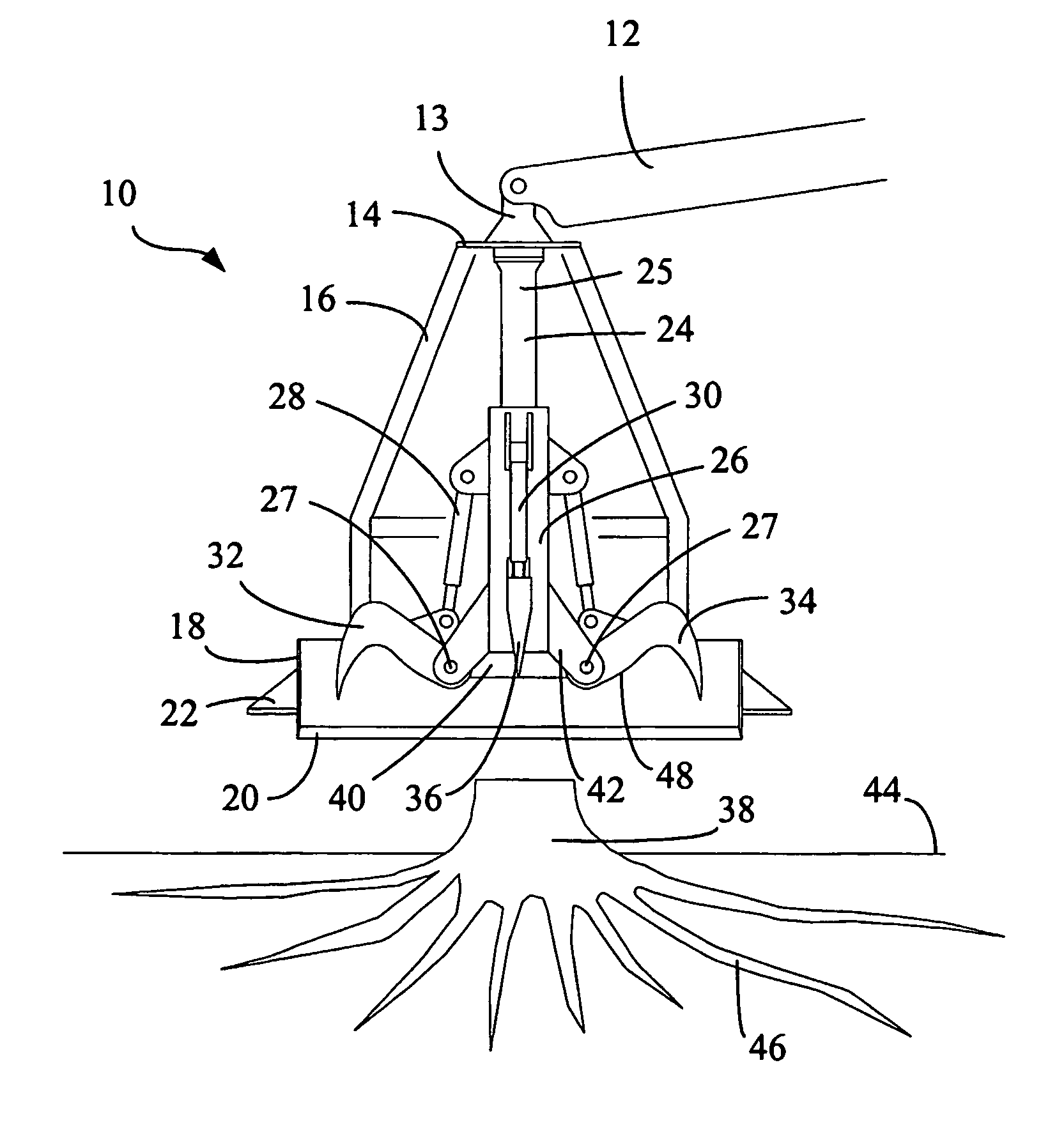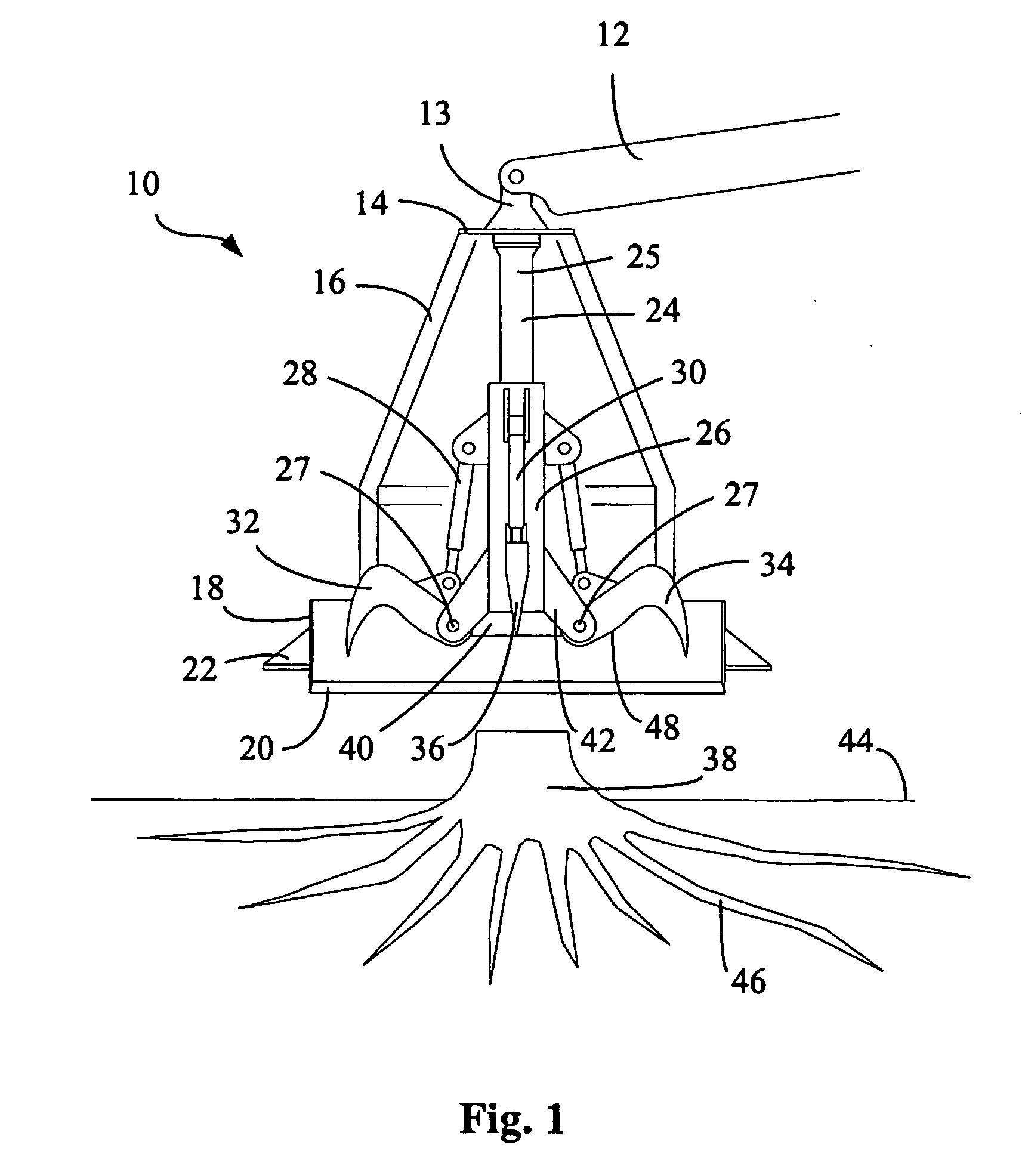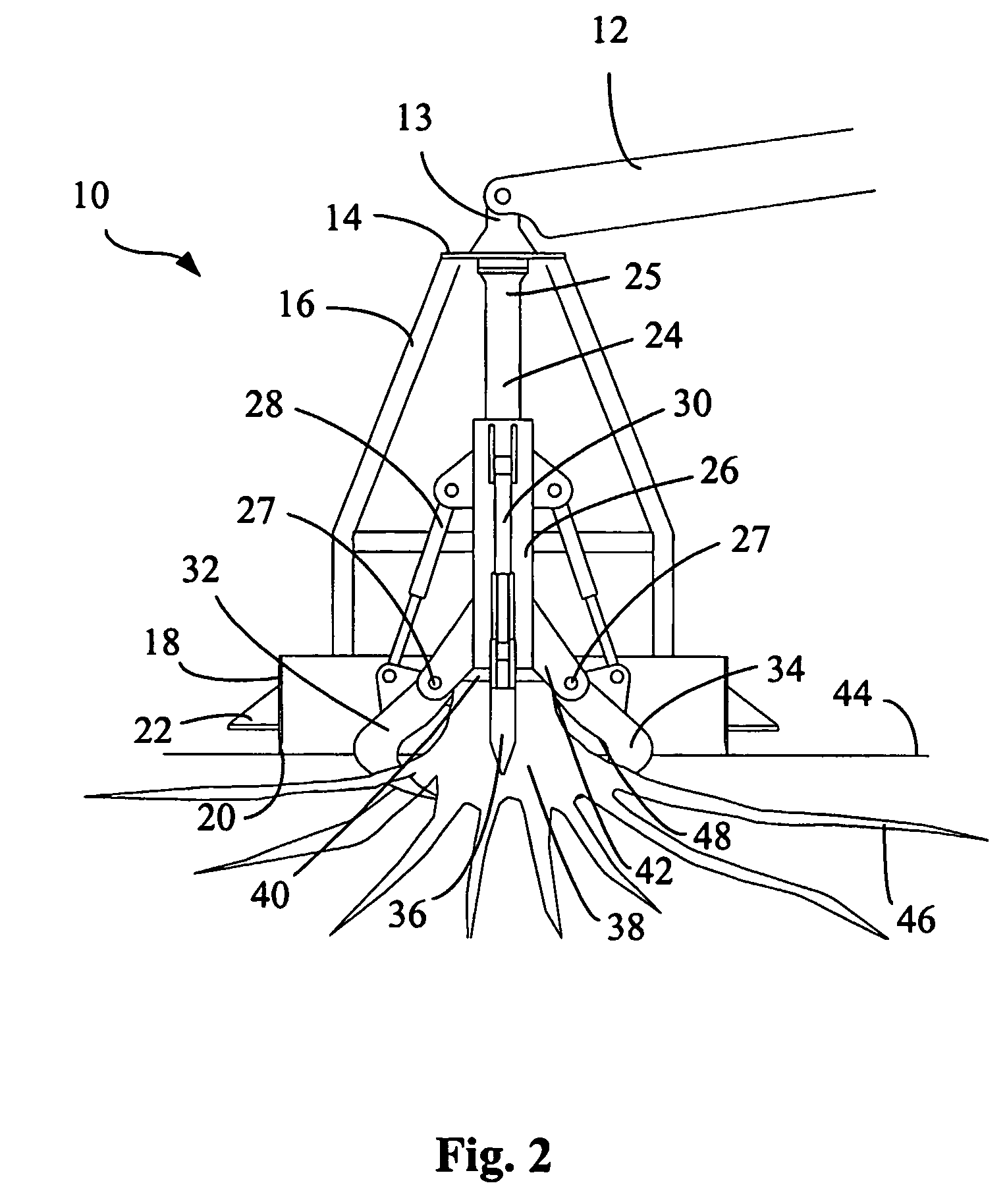Stump grubber, its use, method for grubbing stumps and method for preventing fungus disease such as root rot
a technology of stumps and fungus, applied in the field of stumps, can solve the problems of heavy machinery, slow and therefore expensive, difficult to quickly remove stumps, etc., and achieve the effect of preventing the spread of root rot and efficiently protecting spruce seedlings
- Summary
- Abstract
- Description
- Claims
- Application Information
AI Technical Summary
Benefits of technology
Problems solved by technology
Method used
Image
Examples
Embodiment Construction
[0046] A stump grubber 10 according to the invention shown by way of example in FIGS. 1-4 comprises a frame 14 coupled with coupling means 13 to the boom 12 of a work machine, such as a forest tractor, and a cylindrical blade 18 immovably attached thereto by means of support arms 16. The blade 18 is made of a strong material, such as stainless or hardened steel, and it is sharpened at its lower edge 20. The sharpness of the blade 18 may vary, and an apparatus according to the invention may function, even with a totally dull-edged cylinder 18, depending on the terrain and type of the stump to be extracted. A horizontally positioned flange 22 is welded onto the outer wall surface of the cylinder 18. A vertical main hydraulic cylinder 24 is attached to the centre of the frame. It is stably and immovably attached the top portion of the frame 14 by its piston rod, i.e. by its first end 25. Gripping means, i.e. four hooks, supported by hinges 27 and by hydraulic cylinders 28, 30, are atta...
PUM
 Login to View More
Login to View More Abstract
Description
Claims
Application Information
 Login to View More
Login to View More - R&D
- Intellectual Property
- Life Sciences
- Materials
- Tech Scout
- Unparalleled Data Quality
- Higher Quality Content
- 60% Fewer Hallucinations
Browse by: Latest US Patents, China's latest patents, Technical Efficacy Thesaurus, Application Domain, Technology Topic, Popular Technical Reports.
© 2025 PatSnap. All rights reserved.Legal|Privacy policy|Modern Slavery Act Transparency Statement|Sitemap|About US| Contact US: help@patsnap.com



